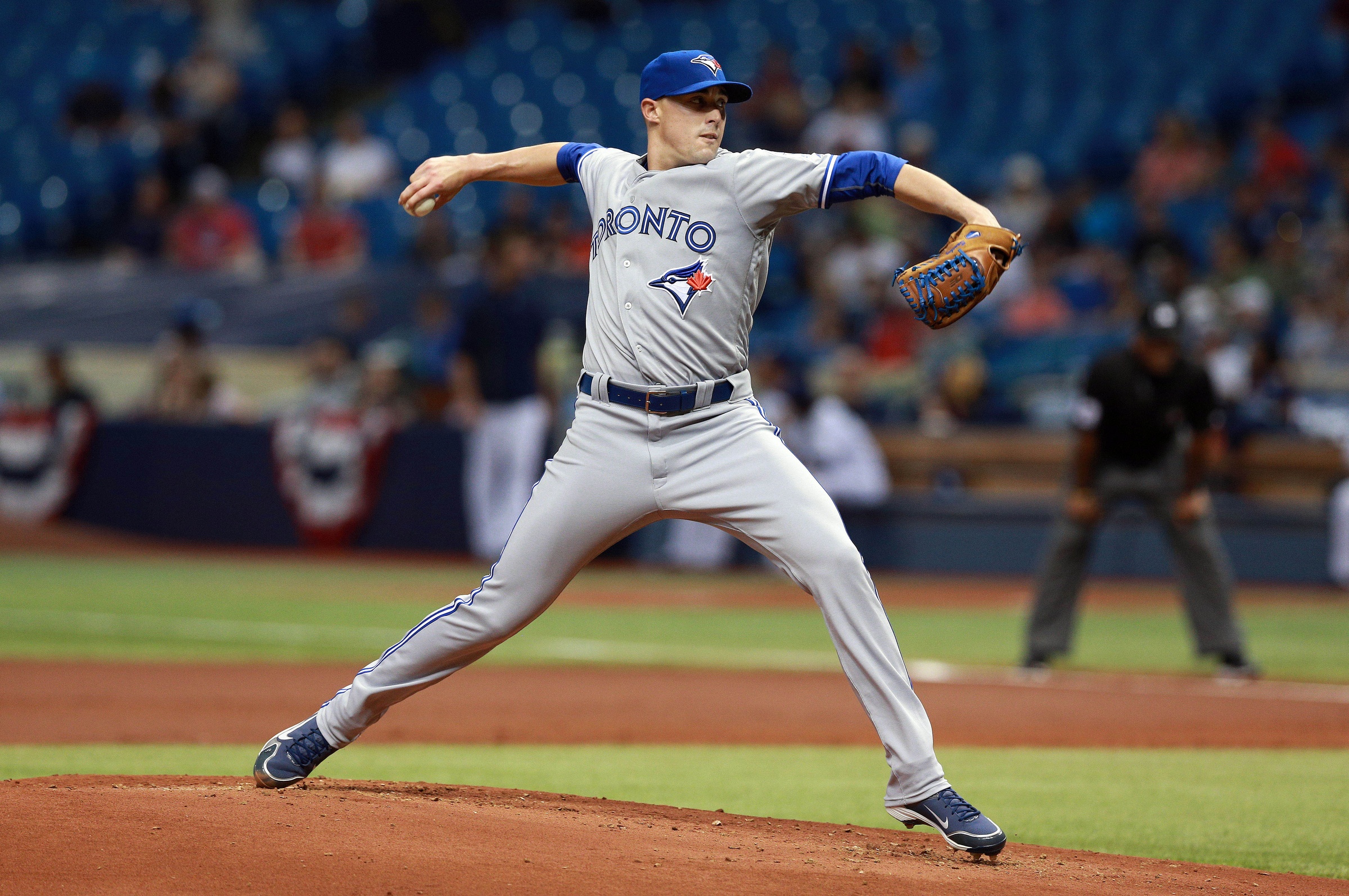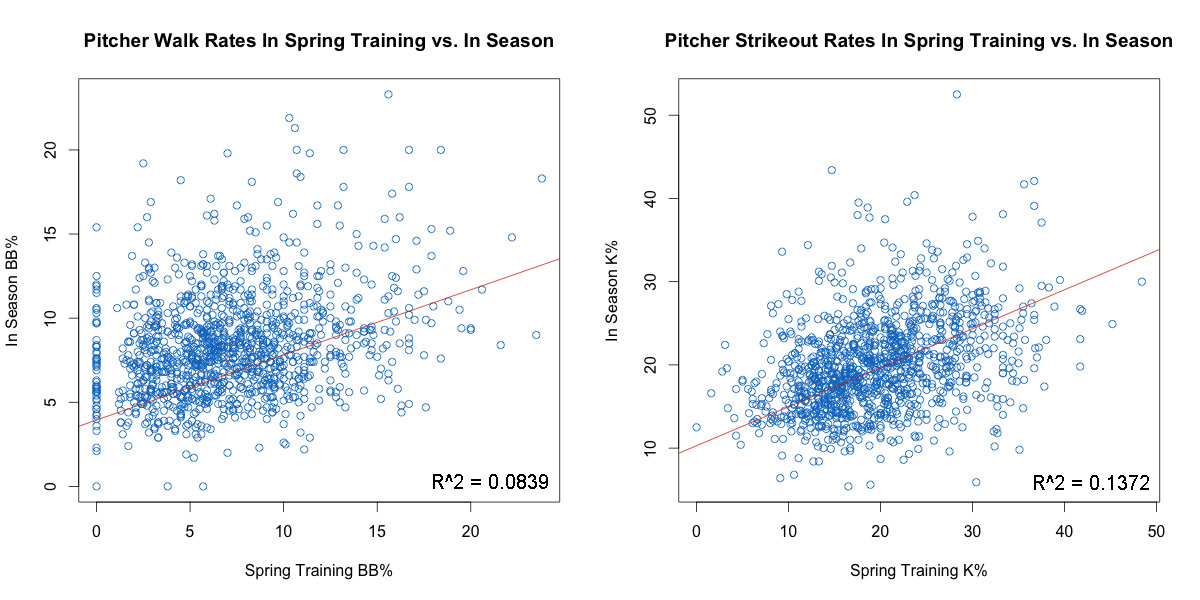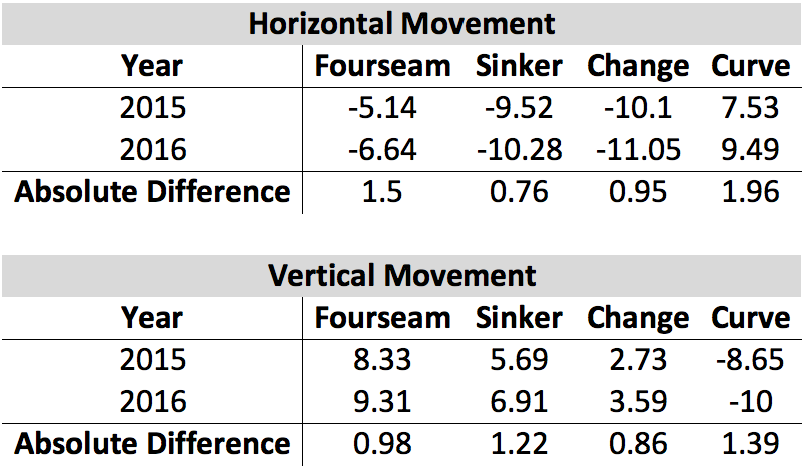On Tuesday, Aaron Sanchez will take on the New York Yankees for his second start of the season. On one hand, that’s not particularly notable; he made 11 starts just last season. On the other hand, I wasn’t in the camp that thought he’d start the season in the rotation, so it’s newsworthy to me. During Spring Training, I suggested that the Jays should’ve sent Sanchez down to AAA. Not for a lack of potential ability, but because I was skeptical that he’d be able to reach it so soon. The fear at the time was that, if he wasn’t good enough right away, the Jays would revert him back to a role in the bullpen. That was the worst possible scenario. After one start, Sanchez has made me look rather foolish, no? Well, a little bit. You can’t fault a start in which Sanchez got eight strikeouts while walking zero over seven innings. However, there might be a little bit of confirmation bias going on here. Let’s investigate.
Where did the Aaron Sanchez starter extraordinaire story line begin? Like many confusing stories, it came from the horse’s mouth. On January 19th, via a media scrum at the Blue Jays winter tour, Sanchez said, “I’ve gained about 25 pounds…if I can play at where I’m at now, that would be ideal. I need to be more durable and I couldn’t do that at 190 pounds.” After having already seen him accumulate a 3.55 ERA over 11 starts last season, fans and pundits alike were more than willing to jump on the starter train. To be fair, Aaron Sanchez gave them every reason to. Over five starts in Spring Training, he struck out 19 batters while walking only three. However, there’s one issue there: Spring Training stats mean so very little.
To prove that, I grabbed the stats for all pitchers with at least 30 batters faced in a single exhibition season since 2013, and compared their walk and strikeout rates to their in season equivalents. Here are the resulting plots.
As you can see, the observations in neither plot are particularly tight, meaning that a pitcher’s Spring Training rates aren’t very predictive for the subsequent season. The fact that, in this comparison of small Spring Training sample sizes, strikeout rate is a tad more predictive than walk rate also falls in line with research done by Rusell Carleton. Carleton’s research found that pitcher strikeout rates stabilize twice as quickly as walk rates; strikeout rate stabilizes after ~70 batters faced, walk rate stabilizes after ~170 batters. Given that information, it’s fairly reasonable to say that all Sanchez’s gaudy Spring Training stats did was reaffirm the bias we already had towards declaring him a starter.
With that said, the Blue Jays had to make a decision on Aaron Sanchez one way or the other. Did they see something in him? Or, did they just get lucky? Given his first start, it’s probably closer to the former than the latter. As Joshua Howsam and Steve McEwen wrote in last week’s rotation review, “[Sanchez] was so good that it’s actually quite difficult to decide what was most encouraging from his performance.” To me, there are a few main things that stood out: Sanchez’s velocity, his pitch mix, and his movement. In last Tuesday’s soiree, Aaron Sanchez’s fastball topped out at 98.5 MPH, which is roughly the same as his season 2015 high as a starter. However, his average fastball velocity was about one mile per hour higher, while his average changeup velocity was roughly the same. What’s more impressive is how confident Aaron Sanchez was with the changeup. On the night as a whole, he used it 16% of the time; more than he had in all but one start last season. He also ended with four whiffs on the pitch, which was a career high.
Then, in terms of movement, Aaron Sanchez’s stuff in his first start was unmatched. Dr. Mike Sonne illustrated that using his STUFF metric, which will appear regularly at BP Toronto shortly.
I'm going to quantify stuff for #BlueJays pitchers over at @BProToronto. Here's a sample from the first 3 games. pic.twitter.com/8QNHxGIR52
— Mike Sonne (@DrMikeSonne) April 7, 2016
The only other Jays pitcher who had a higher STUFF improvement was R.A. Dickey…and that’s simply because knuckleballers don’t actually work with the metric. The inconsistent movement direction of the pitch makes break data meaningless. Getting back to Sanchez, when you look at the more granular data, you can see much of how Mike Sonne came to his conclusion.
Each one of Aaron Sanchez’s four main offerings had better horizontal and vertical movement than his averages as a starter last season. With that kind of action, it’s no wonder that (once again from the roto review) “Tampa missed on a whopping 32.7 percent of their swings. To get an idea of how good that is, last year Francisco Liriano led the major leagues with a swing and miss rate of 33.5 percent, and Clayton Kershaw was third at 32.6 percent.”
You’ll often hear pitchers talk about how their ‘stuff was really good’. Sometimes, a starter’s fastball is really pumping; other times, his off speed stuff may be breaking more. In his first start, every single one of Sanchez’s pitches worked. While that led to an incredibly good start in that instance, it’s very unlikely that every single offering remains top notch. Pitch quality fluctuates, and it’s all on the margins. Without a trend and a larger sample to back it up, I’m not convinced that he’s a new man…I’m also not not convinced.
If you’d like to know why, here’s a quick comparison of two pitchers’ combined stats for Spring Training and the first start of a season.
Pitcher A: 33.2 IP, 37 K, 6 BB
Pitcher B: 28 IP, 27 K, 3 BB
Pitcher B, as you might have guessed, is Aaron Sanchez in 2016. Pitcher A is Trevor Bauer in 2015. By 2015, Bauer had about two thirds of a season under his belt, and he was coming out of Spring Training with a lot of hype. Could he take the next step forward?! If you were only to look at those stats, you certainly might think so. Through the rest of the season, he was erratic as ever, and ended up with a 4.55 ERA to go along with a 4.17 DRA. Now, in 2016, he’s in the bullpen. That’s about as cautionary a tale as you’ll find.
That’s not to say that Aaron Sanchez will necessarily end up with the same fate; it is just that with so few looks, it’s nearly impossible to understand if he has truly taken a step forward. You, me, him, her; we all like Sanchez. Since he entered the major leagues, he has done everything to try and succeed. As soon as there was any indication over the offseason that he could be better, our minds all wanted to believe that it must be true. In Spring Training, Sanchez didn’t fail us. In his first start, Sanchez didn’t fail us. And he’s supposed to be quite good. Having seen pitchers in similar situations fail, I’m not buying that Aaron Sanchez is this good on a consistent basis just yet, and you shouldn’t either. But, at the very least he has given us proof that the upside is there. I suppose at this point that’s all we can ask for.
Lead Photo: Kim Klement-USA TODAY Sports


